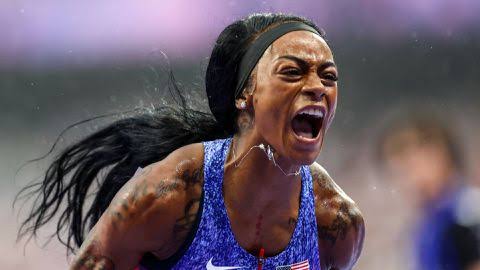Sha’Carri Richardson, a rising star in track and field, has found herself at the center of a storm following a ban that has left fans and athletes alike in shock. Known for her incredible speed and vibrant personality, Richardson was poised to be one of the key competitors in the upcoming championships. However, a recent violation of doping regulations has led to a suspension that has cast a shadow over her career.

The decision to ban Richardson stems from a positive test for a prohibited substance, which she has publicly acknowledged. In a heartfelt statement, she expressed her deep regret and took responsibility for her actions, revealing that she had turned to the substance in a moment of vulnerability following the death of her biological mother. This revelation has sparked a conversation about the pressures faced by elite athletes and the personal challenges that often go unnoticed behind their public personas.
Richardson’s story resonates deeply within the athletics community and beyond. She emerged as a beacon of hope for many, particularly young athletes from marginalized backgrounds, and her journey has been a testament to resilience. The ban has not only jeopardized her career but has also ignited discussions about mental health, substance use, and the rigorous expectations placed on athletes.
Fans have rallied around her, expressing solidarity and urging for a more compassionate approach to doping violations. Many believe that the current policies fail to take into account the complex circumstances athletes face, including grief, mental health struggles, and societal pressures. The debate raises critical questions about how the sports community can better support athletes in times of crisis.
While the suspension is a significant setback for Richardson, her determination to return to the sport is evident. She has vowed to work hard during her time away and is committed to coming back stronger. This incident serves as a stark reminder of the human side of sports, where triumphs and tribulations often intertwine.
As the track and field world awaits her return, Richardson’s journey highlights the need for empathy and understanding in athletics. It encourages a reevaluation of how athletes are treated in the face of personal challenges, emphasizing that behind every record-breaking performance is a human story filled with struggles and triumphs. In the end, Richardson’s resilience may inspire not only her fellow competitors but also a broader movement towards change within the sport.


